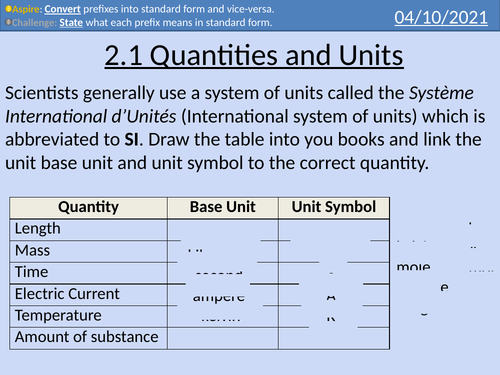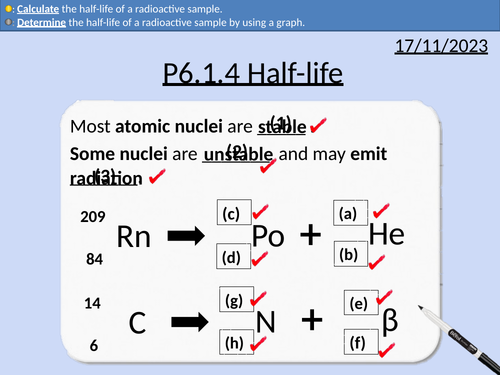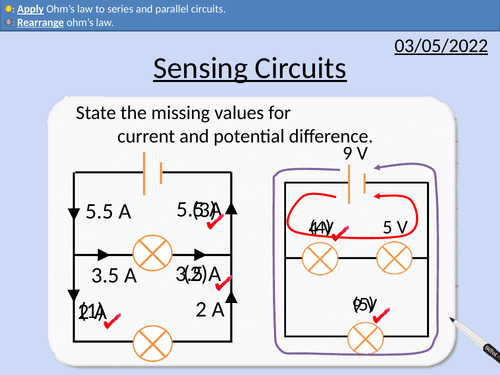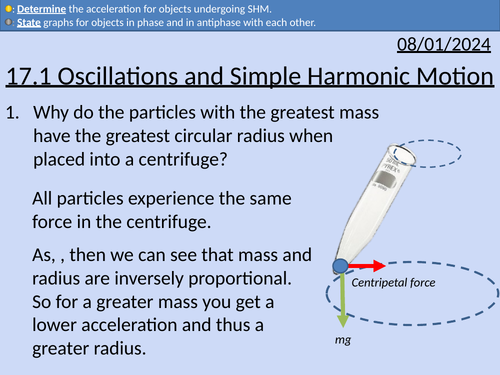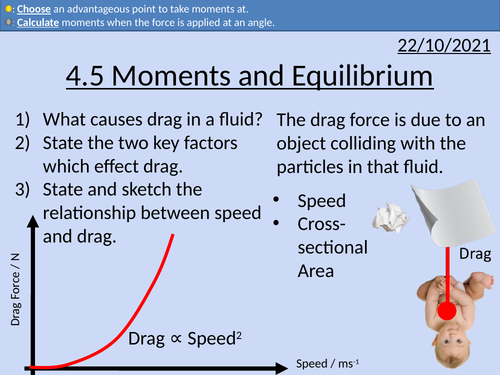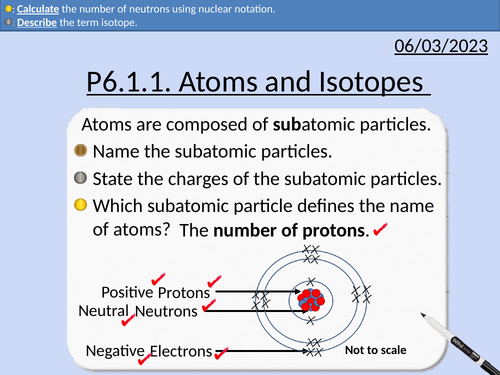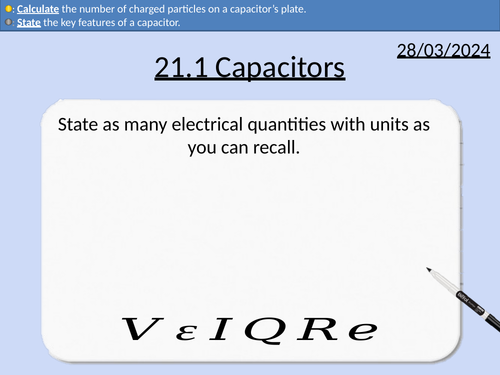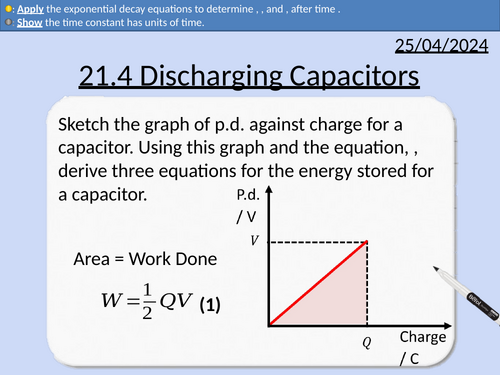499Uploads
171k+Views
73k+Downloads
Physics

OCR A level Physics: Nuclear Fission
OCR A level Physics: 26.3 Nuclear Fission
Module 6 Particles and Medical Physics
This PowerPoint is a whole lesson included with student activities, animated answers, homework questions with answers provided.
This lesson covers:
Fuels in nuclear fission reactors
Moderators and thermal neutrons
Conservation of mass-energy
Energy released in fission reactions
Control rods
Nuclear waste management
Bundle

OCR AS level Physics: Quantum Physics
OCR AS level Physics presentations for module 4: Quantum Physics.
All presentations are full lesson PowerPoints with worked examples and homeworks with complete worked answers.
The Photon Model
Energy of a single photon
Converting from electron-volts to Joules.
Frequency of the electromagnetic spectrum
Determining Plank’s constant with LEDs
Threshold potential difference difference
Photoelectric Effect
Threshold frequency
Producing photoelectrons
Kinetic energy of photoelectrons
Linking frequency and wavelength
The electromagnetic spectrum, frequency and energy.
Einstein’s Photoelectric Equation
The photoelectric equation
Work function and Kinetic Energy
Determining work function from a graph
Determining threshold frequency from a from graphical analysis.
Determining Plank’s constant from graphical analysis.
Wave Particle Duality
deBroglie wavelength equation
Diffraction of electrons and protons
Comparing wavelengths of particles with different masses
Kinetic energy and wavelength

OCR AS level Physics: Quantities and Units
OCR AS level Physics: Quantities and Units is a part of the Module 2: Foundations of Physics
Full lesson PowerPoint with worked examples and homework with complete worked answers.
Overview of A level physics
Base units and quantities
Converting into base units
Converting from base units into non-base units

GCSE Physics: Forces and Fleming's Left Hand Rule
This presentation covers OCR Gateway Physics 9-1 P4.2.1 Forces, Current and Fleming’s Left Hand Rule.
This presentation includes:
Interacting Magnetic Field Lines
Increasing Magnitude of the force on a current carrying conductor
Applying Fleming’s Left Hand Rule

OCR AS level Physics: Projectile Motion
OCR AS level Physics: Projective Motion is a part of the Module 3: Forces and Motion
Presentation come with worked examples, solutions and homeworks.
Includes:
Resolving vectors in 2D
Pythagoras’ theorem:
Equations of constant acceleration - suvat equations
Projectiles being dropped
Projectiles fired at and angle to the horizontal
Velocity-time graphs
Bundle

GCSE Physics: P3 Electricity Full Scheme
All resources for P3 Electricity GCSE OCR Physics Gateway 9-1. Triple and combined (Higher and Foundation) is covered in this material.
Includes:
Electrostatics
Electrical Current
Electrical Current Practical Activity
Circuit Symbols and Potential Difference
Series and Parallel Circuits
Resistance and Ohm’s Law
Resistance of a wire Practical Activity
I-V Characteristics and Component Graphs
Circuit Calculations
Sensing Circuits
Electrical Power and Energy

GCSE Physics: Half-life
This presentation covers OCR Gateway Physics 9-1 P6.1.4 Half life
All presentations come with student activities and worked solutions.
Definition of half-life
Radioactive decays are random
Finding half-life from a graph
Constructing a half-life graph
Finding the number of half-lives past using ratios

OCR AS level Physics: Resistance and Resistivity
OCR AS level Physics: Resistance and Resistivity is a part of the Module 4: Electrons, Waves, and Photons. PowerPoint with worked examples and homework.
Factors affecting resistance
Calculating resistivity
Resistivity and temperature
Experimentally determining resistivity
Using a graph to calculate resistivity

GCSE Physics: Sensing Circuits
This presentation covers OCR Gateway Physics 9-1 P3.2.7 Sensing Circuits
Potential difference in series and parallel circuits
Lamps in series and parallel
Gravitational potential and potential difference
LDR and Thermistor in potential divider circuits
Using LDRs to control security lights
Using thermistors to control heating/cooling circuits
Exam questions with worked solutions

OCR A level Physics: Objects in the Universe
OCR A level Physics: 19.1 Objects in the Universe
Module 5 Newtonian World and Astrophysics
This PowerPoint is a whole lesson included with student activities, animated answers, homework questions with answers provided.
This lesson covers:
The size of astronomical objects: Universe, Galaxies, Solar systems, Stars, Planets, Planetary satellites, Comets, Artificial planetary satellites
Comparing planets and comets
The birth of stars
Stars in equilibrium during the main sequence
Bundle

GCSE OCR Physics P4 Magnetism
All resources for P4 Magnetism and Magnetic Fields for GCSE OCR Physics Gateway 9-1.Triple and combined (Higher and Foundation) is covered in this material.
• Magnets and Magnetic Fields
• Currents and Fields
• Right Hand Cork-screw Rule
• Fleming’s Left Hand Rule
• Currents and Forces
• Motors
• Electromagnetic Induction
• Generators
• Transformers
• Speakers and Microphones

GCSE Physics: Hydraulic Systems
This presentation covers OCR Gateway Physics 9-1 P2.3.6 Hydraulic Systems
• Uses of hydraulics
• Pressure equation
• Rearranging equation
• Calculating pressure in liquids
• Describing how force multiplies in hydraulic systems
• Worked examples and student problems

OCR A Level Physics: Simple Harmonic Motion and Oscillations
OCR A Level Physics: Simple Harmonic Motion and Oscillations presentation, homework and answers.

OCR AS level Physics: Moments and Equilibrium
OCR AS level Physics: Moments and Equilibrium is a part of the Module 3: Forces and Motion
Presentation come with worked examples, solutions and homeworks.

GCSE Physics: Atoms and Isotopes
This presentation covers OCR Gateway Physics 9-1 P6.1.1 Atoms and Isotopes
All presentations come with student activities and worked solutions.
Structure of atom
Properties of subatomic particles
Atomic Number
Mass Number
Nuclear Notation
Calculating the number of neutrons

OCR A level Physics: Capacitors
OCR A level Physics: 21.1 Capacitors
Module 6 Particles and Medical Physics
This PowerPoint is a whole lesson included with student activities, animated answers, homework questions with answers provided.
This lesson covers:
Electrical quantities, symbols, and units
SI prefixes and standard form
Definition of a capacitor
Structure of a capacitor
Calculating capacitance, charge, and potential difference.

OCR A level Physics: Discharging Capacitors
OCR A level Physics: 21.4 Discharging Capacitors
Module 6 Particles and Medical Physics
This PowerPoint is a whole lesson included with student activities, animated answers, homework questions with answers provided.
This lesson covers:
Exponential increase and exponential decay
Explaining how capacitors discharge through a resistor in parallel
Definition of time constant for a capacitor
Showing that time constant has units of seconds
Iterative method for finding how capacitors discharge
Using exponentials and logs.
Solving a differential equation (needed for A-level Maths).

OCR A level Physics: Half-life and Activity
OCR A level Physics: 25.3 Half-life and Activity
Module 6 Particles and Medical Physics
This PowerPoint is a whole lesson included with student activities, animated answers, homework questions with answers provided.
This lesson covers:
The reason why radioactive decays are considered random and spontaneous
Rolling dice being a good analogue for radioactive decays
Definition of half-life
Determining half-life from a graph.
Calculating half-life from a table of data.
Activity of a sample in Bq
The decay constant derivation
Bundle

GCSE OCR Physics: P2 Forces Full scheme
All resources for P2 GCSE OCR Physics Gateway 9-1.Triple and combined (Higher and Foundation) is covered in this material.
Includes:
Distance, time, and speed
Vectors and scalars
Acceleration
Distance-time graphs
Velocity-time graphs
Equations of motion and Kinetic Energy
Forces and interactions
Free-body Diagrams
Newton’s first law
Newton’s second law
Everyday forces and their effects
Momentum
Work and Power
Stretching springs
Stretching materials and storing energy
Gravitational Fields and Potential Energy
Turning Forces
Simple Machines
Hydraulics

OCR A Level Physics: Gravitational Potential
OCR A level Physics: 18.6 Gravitational Potential
Module 5 Newtonian World and Astrophysics
This PowerPoint is a whole lesson included with student activities, animated answers, homework questions with answers provided.
This lesson covers:
Center of mass and treating spherical objects as point masses
Gravitational fields
Definition of gravitational potential
Applying the gravitational potential equation
Graph of gravitational potential against distance (V against r)
Combining gravitational potentials from more than one mass



